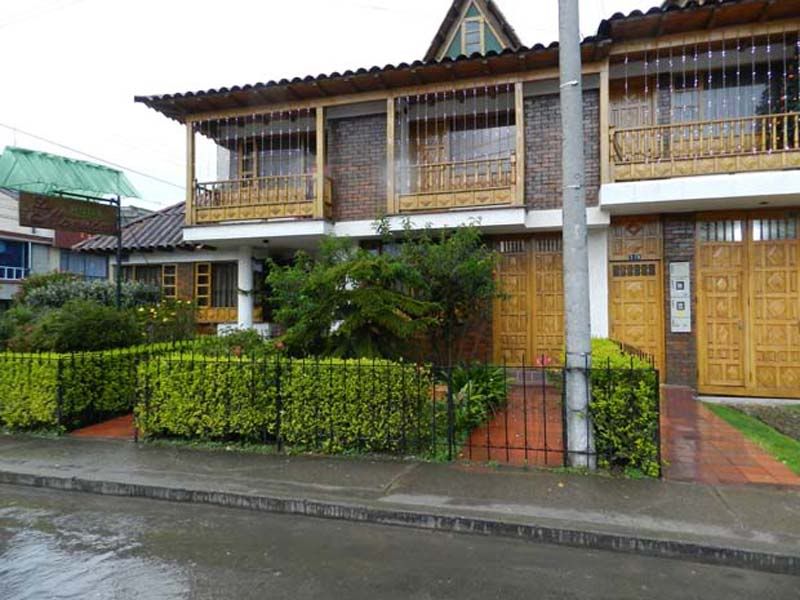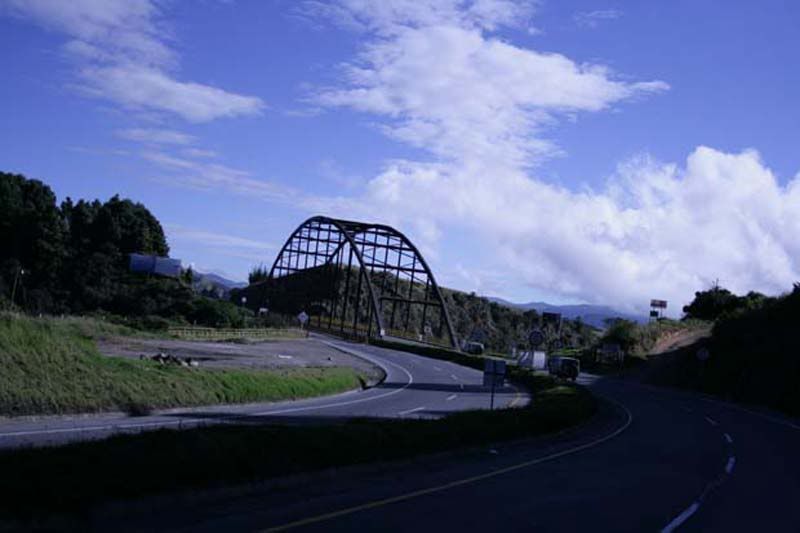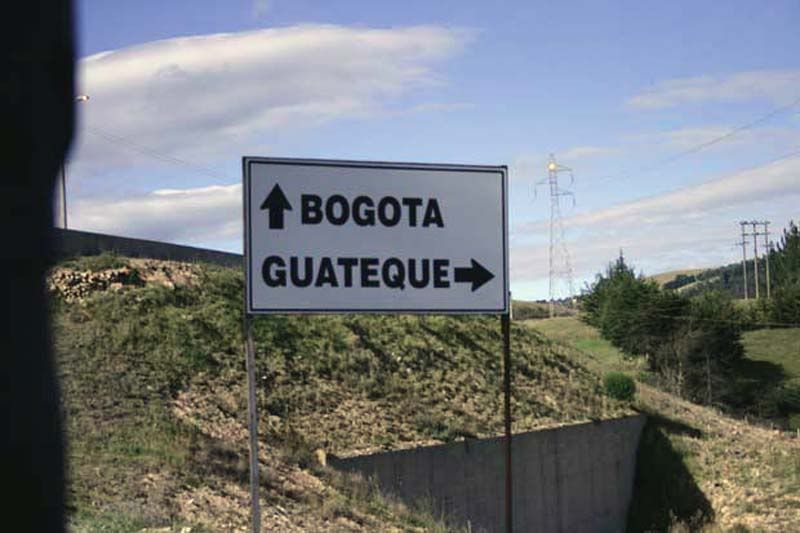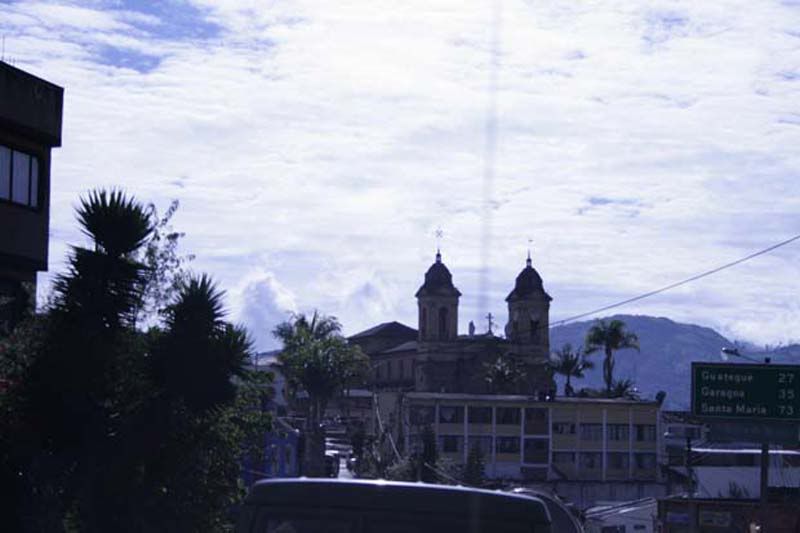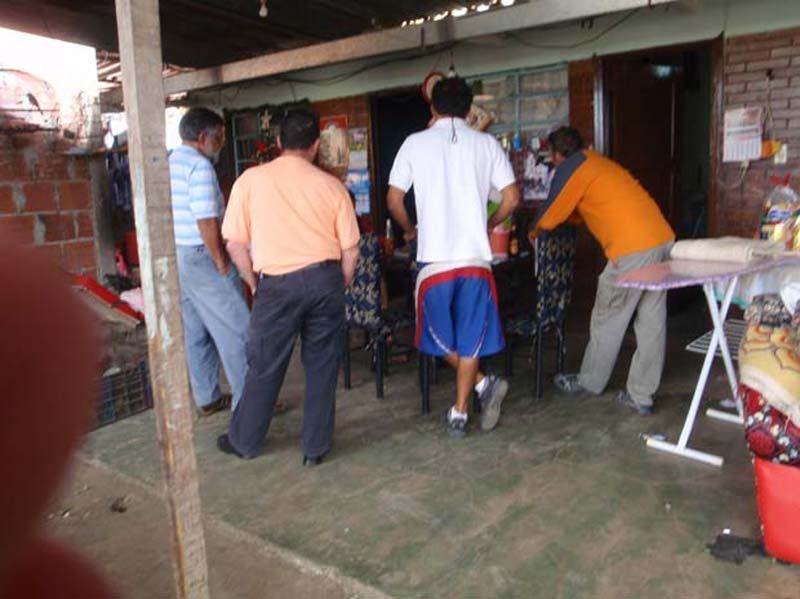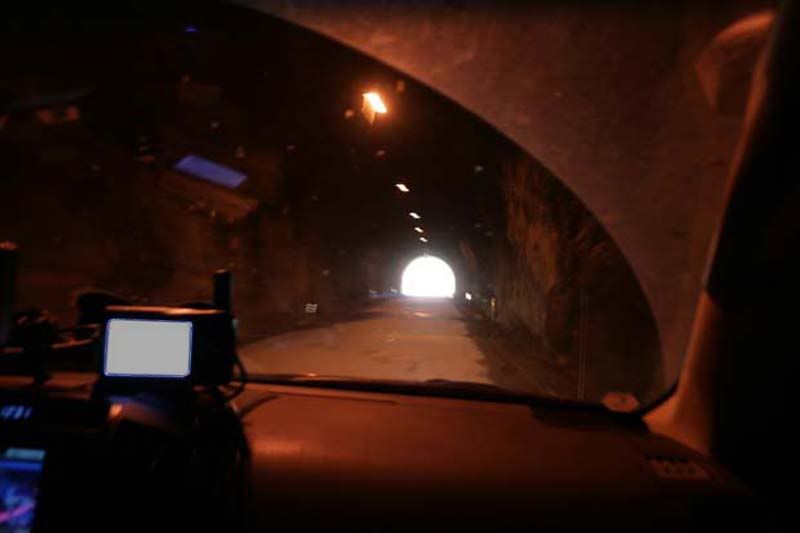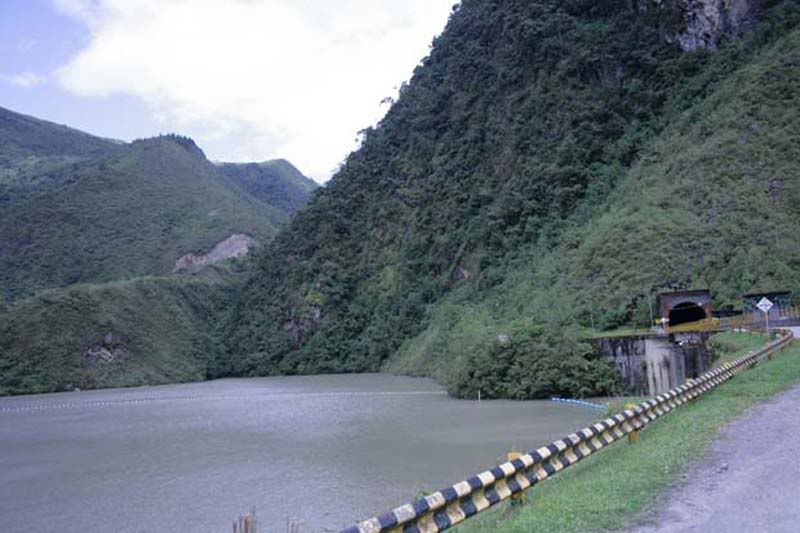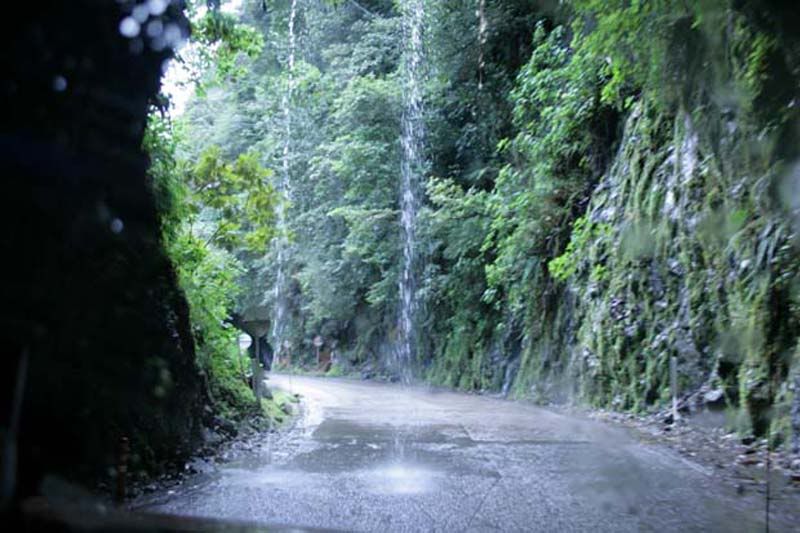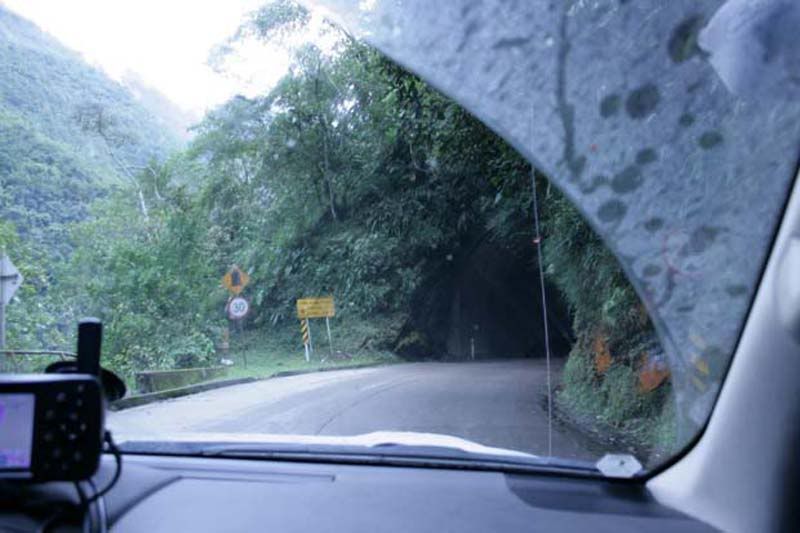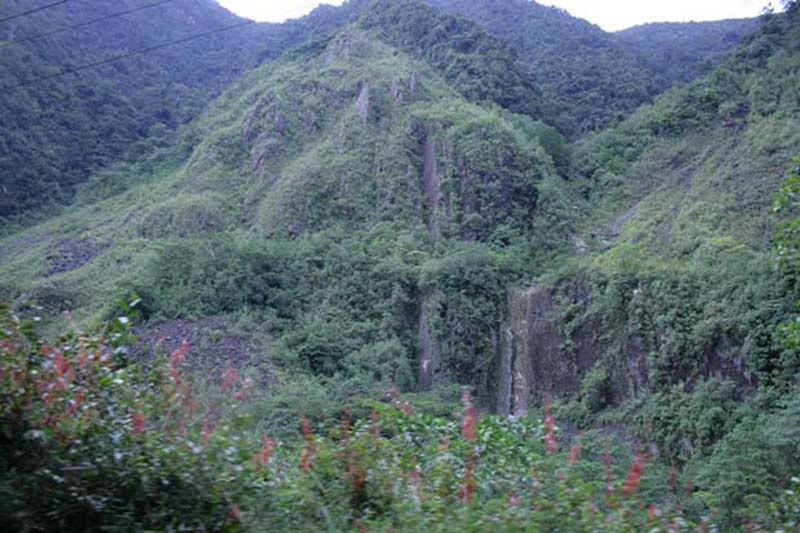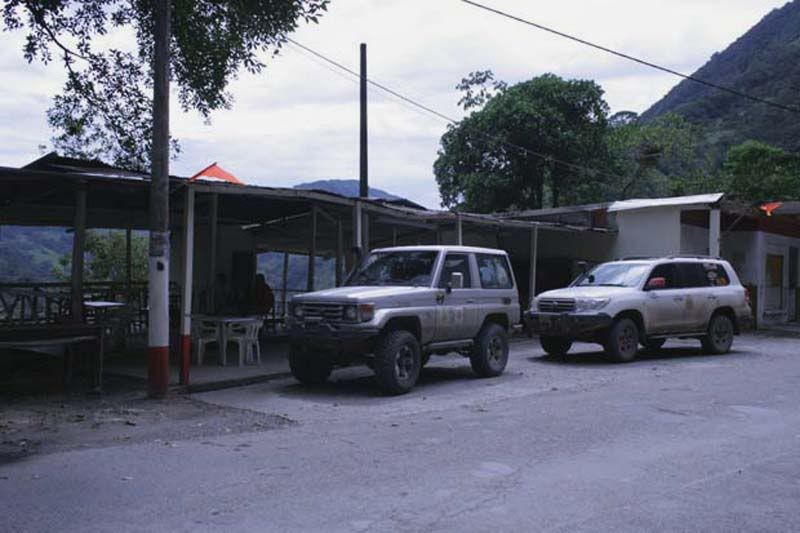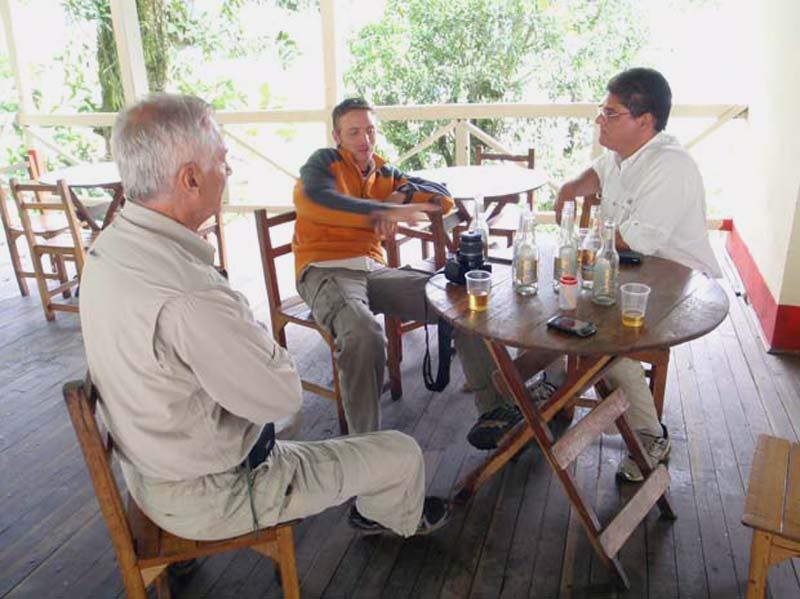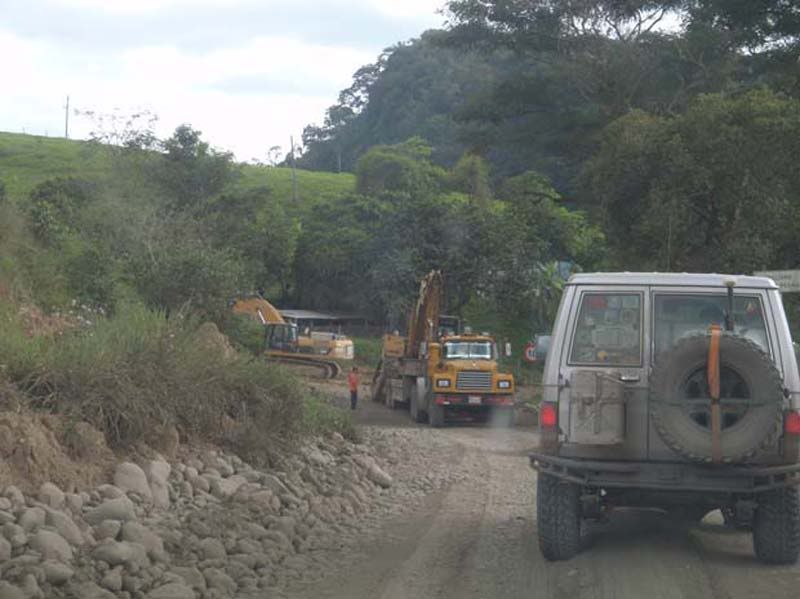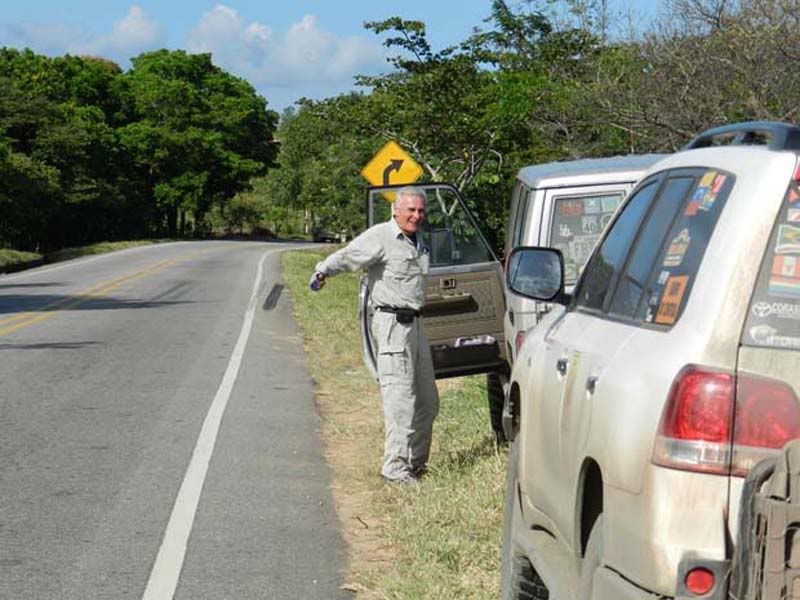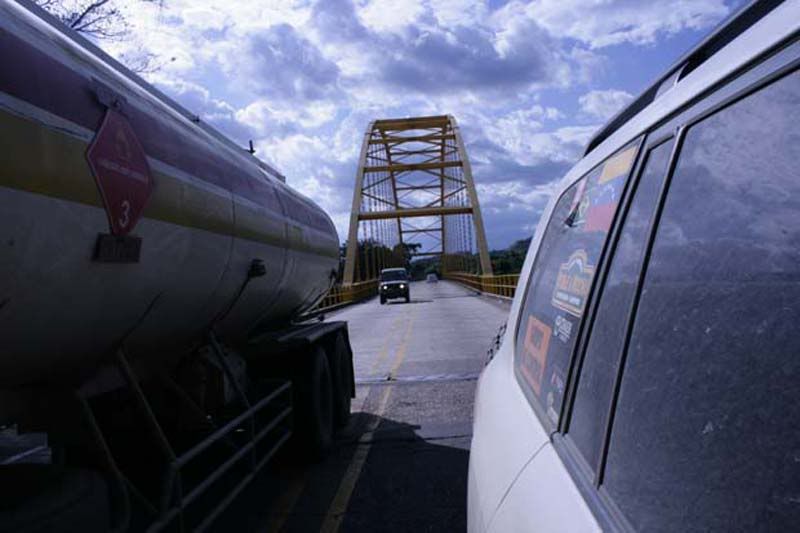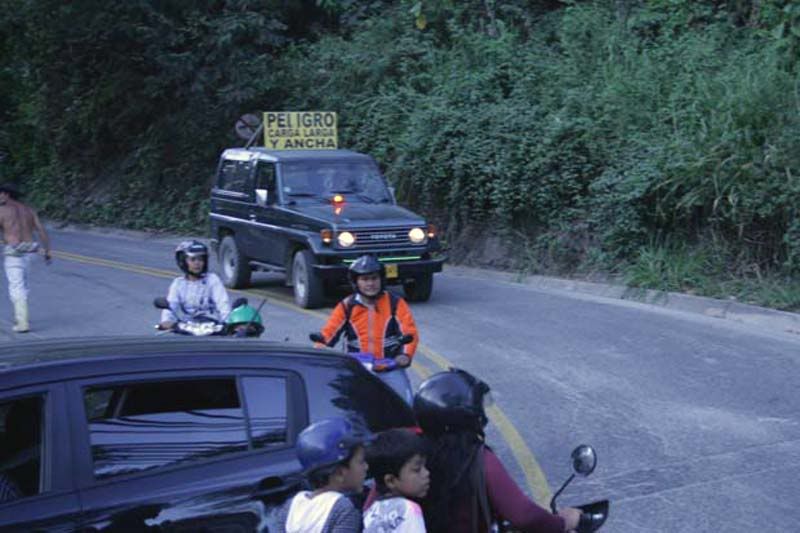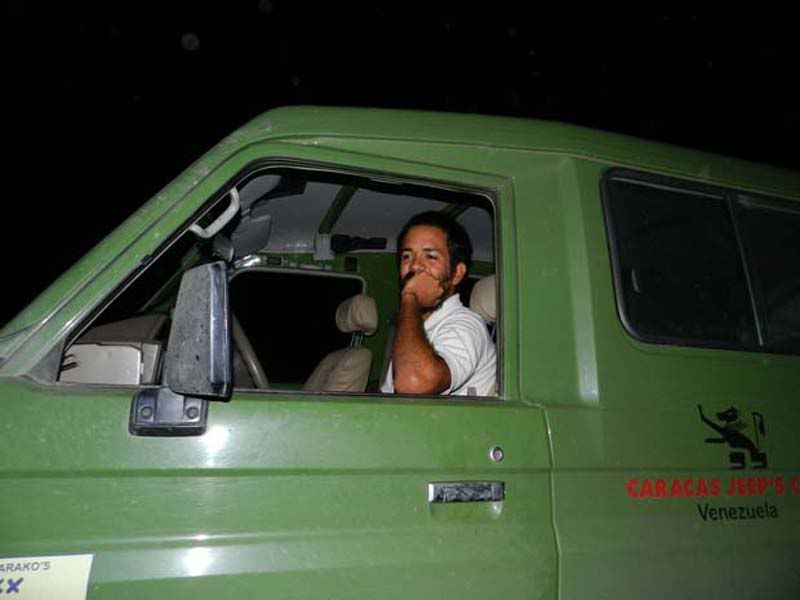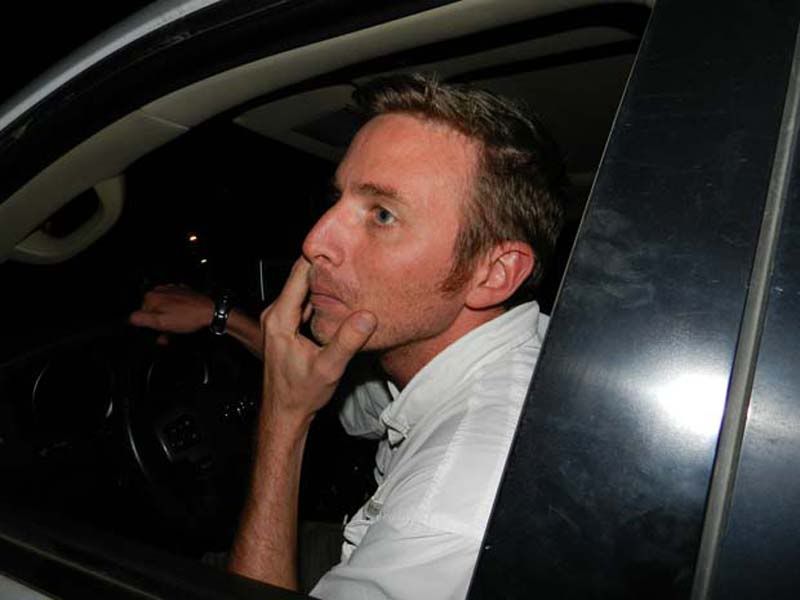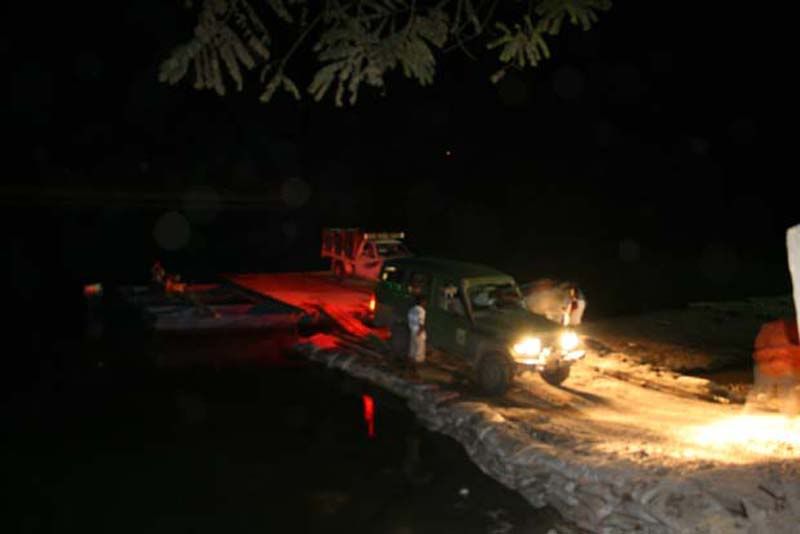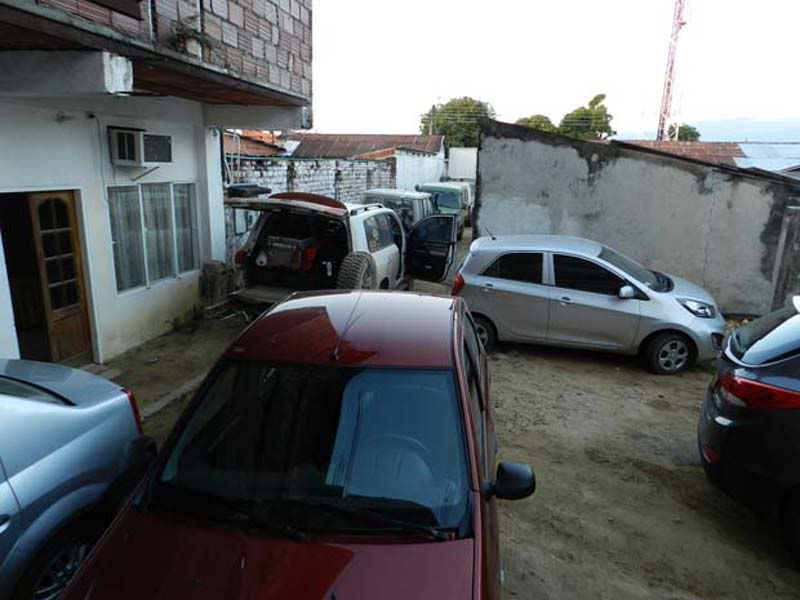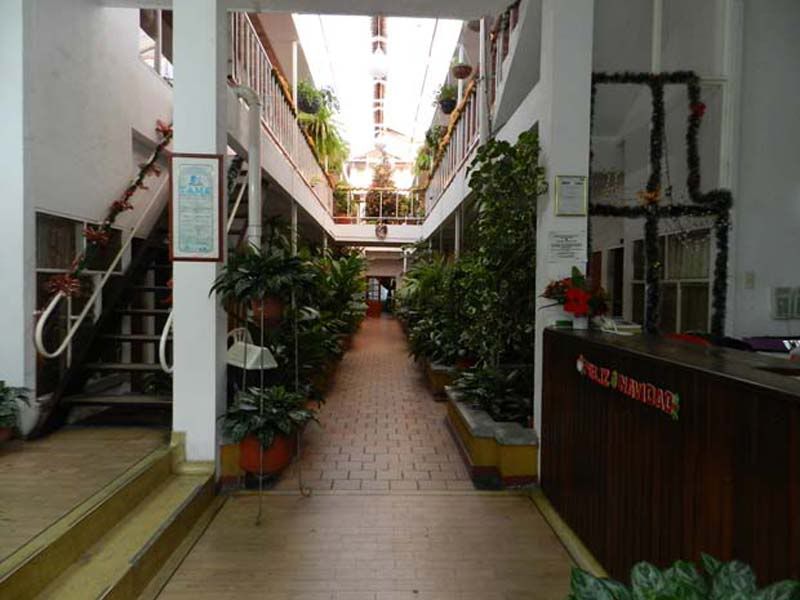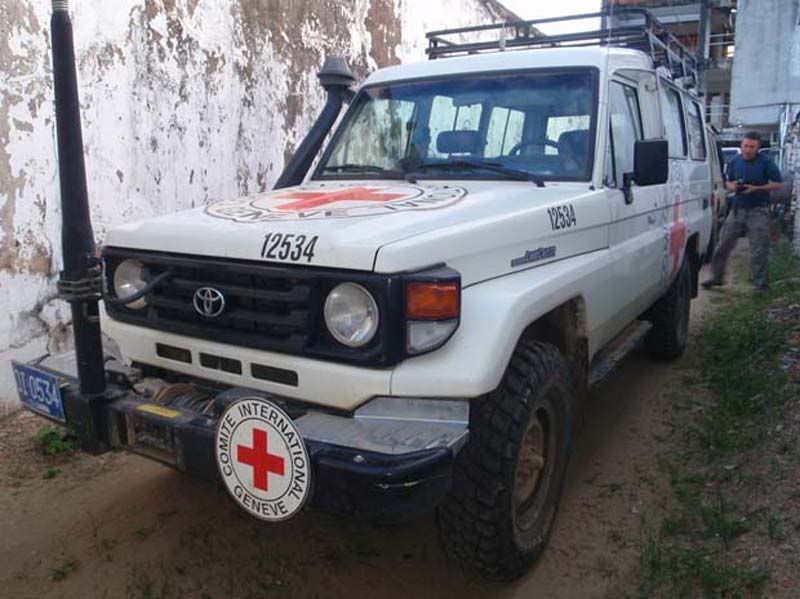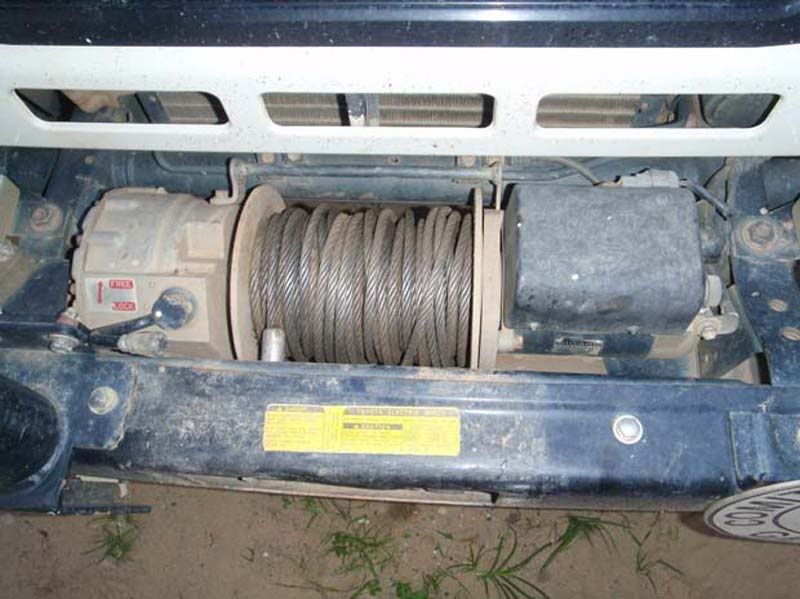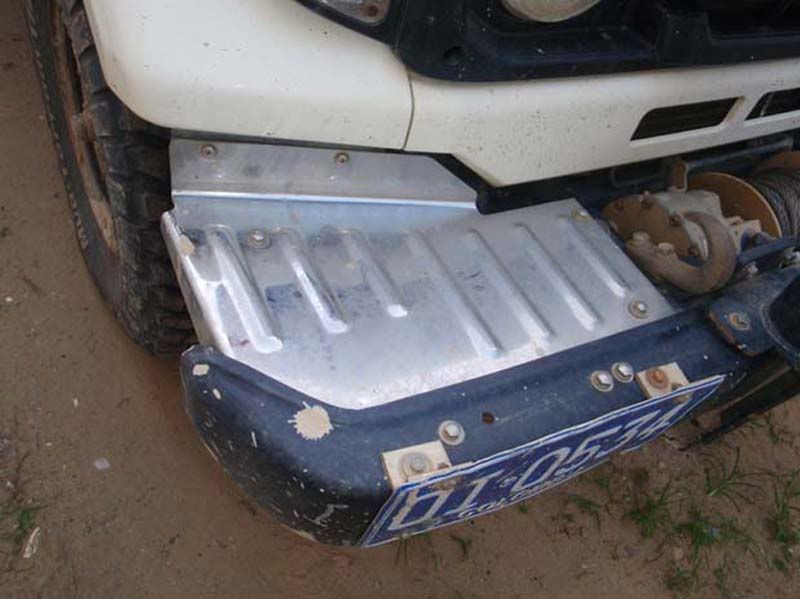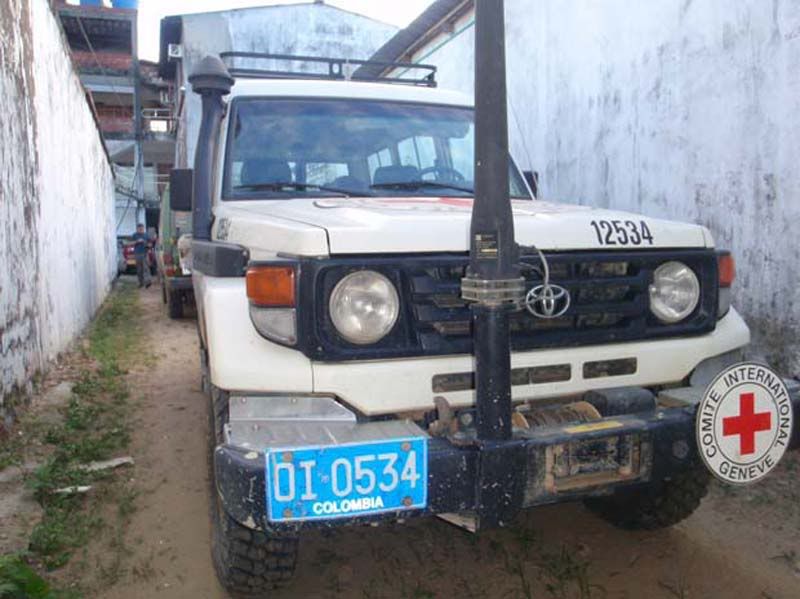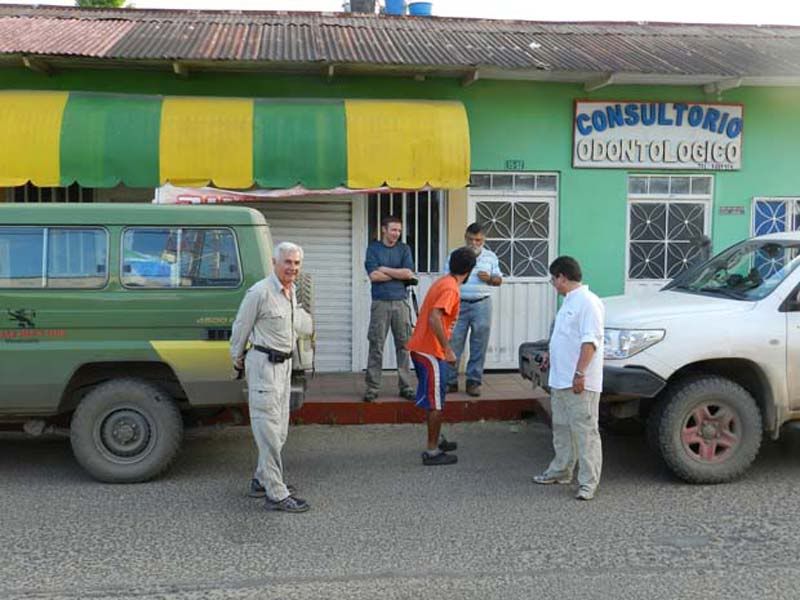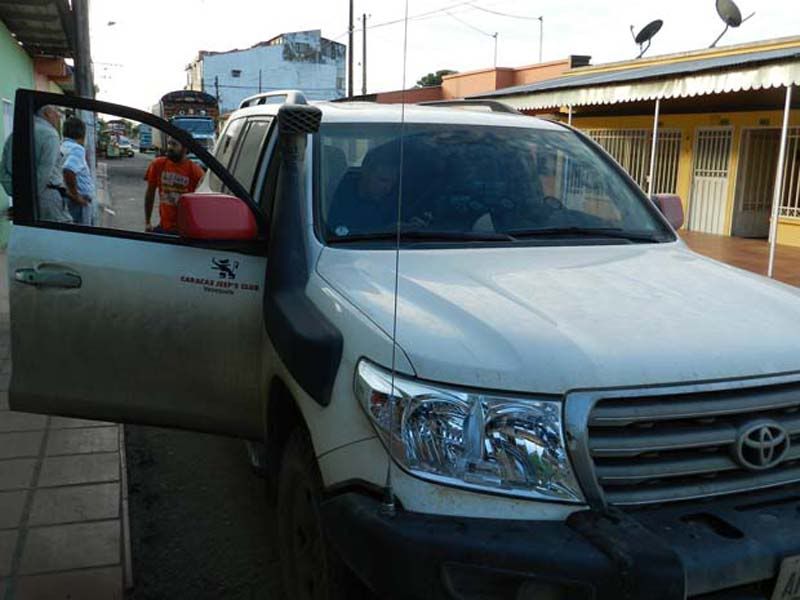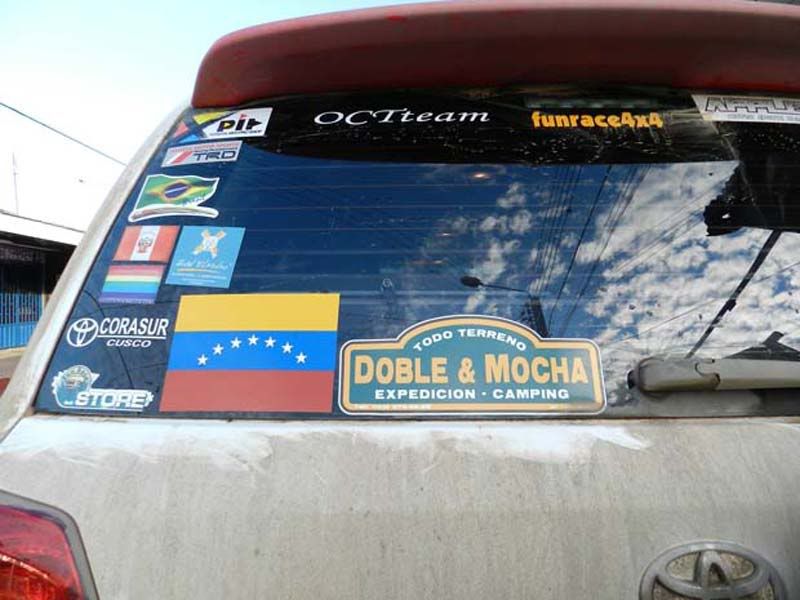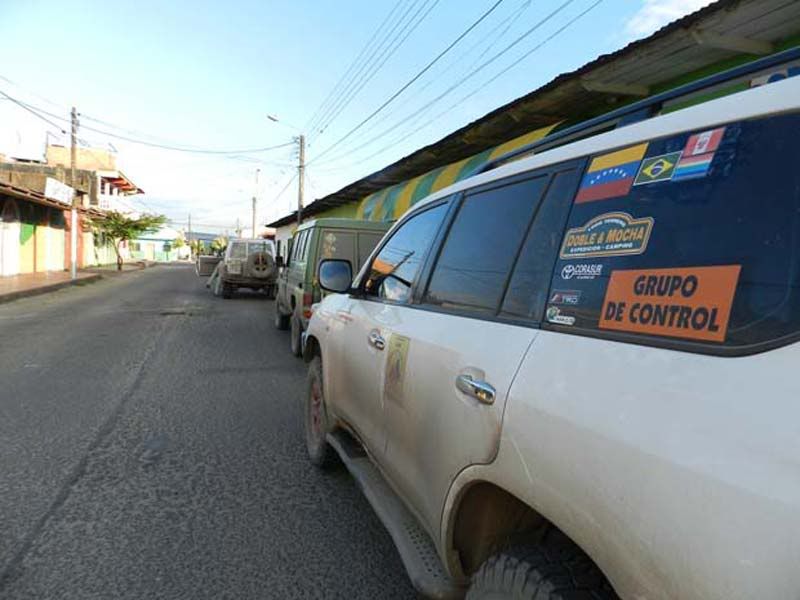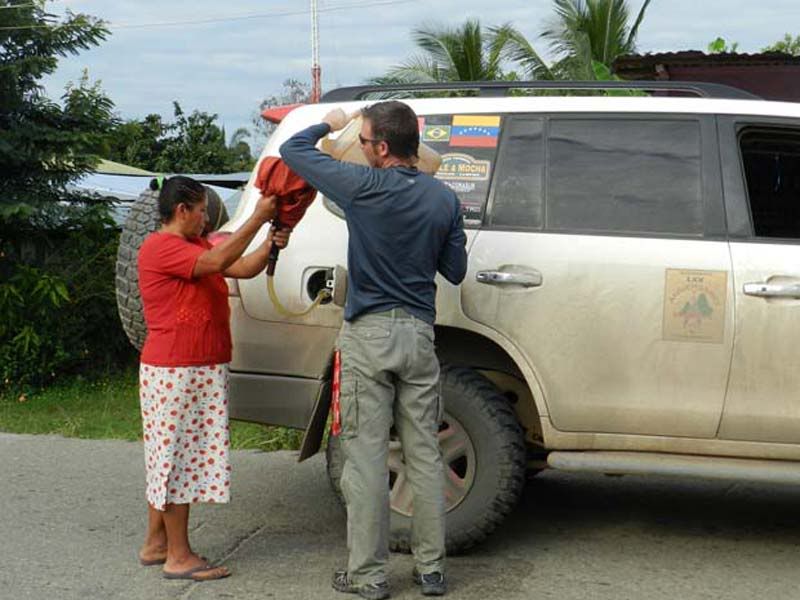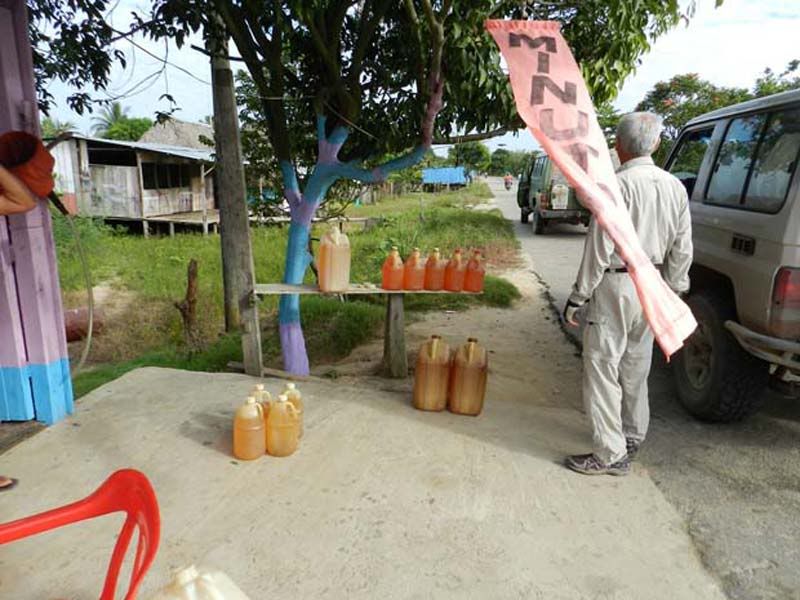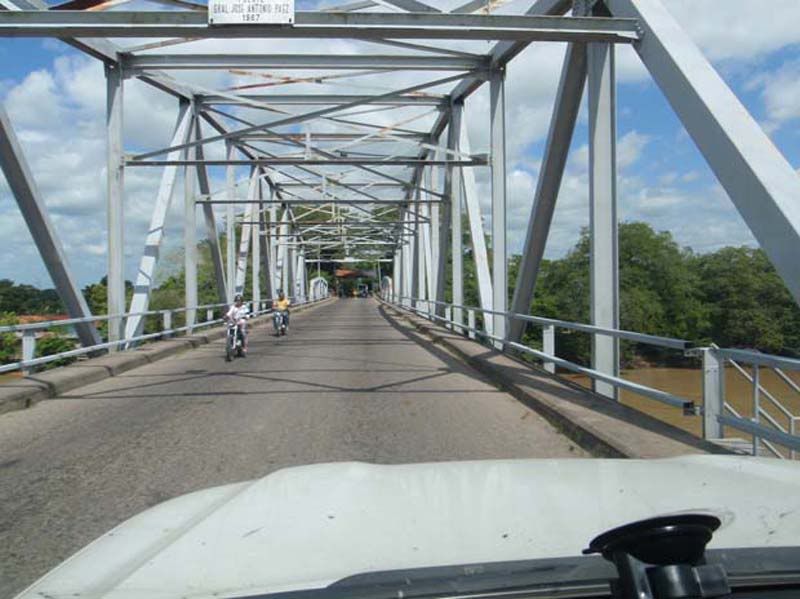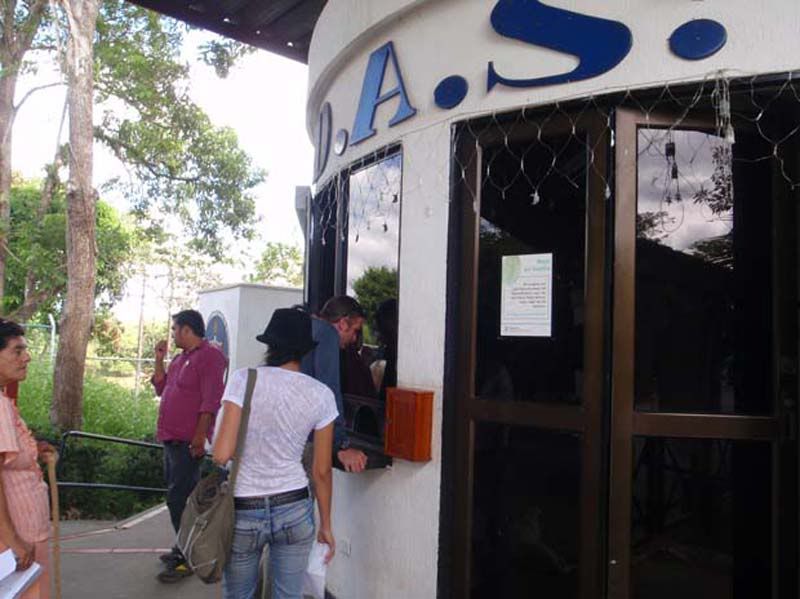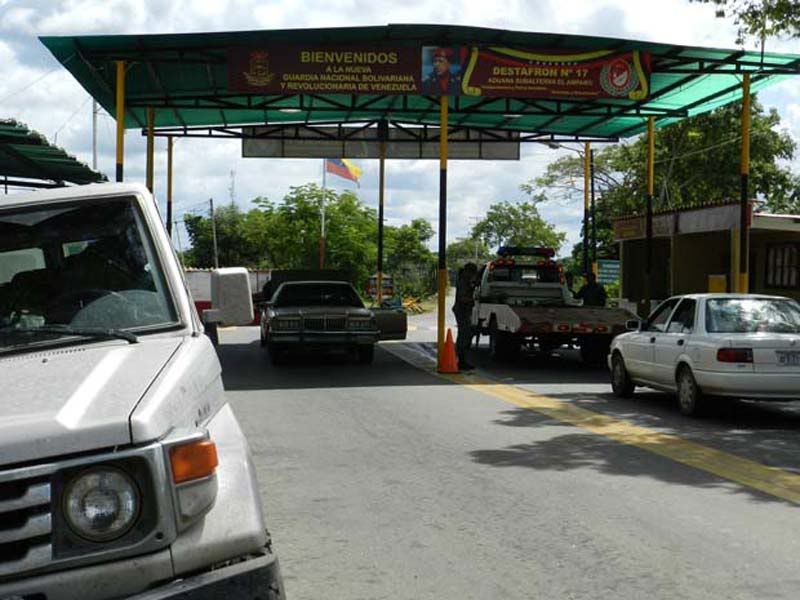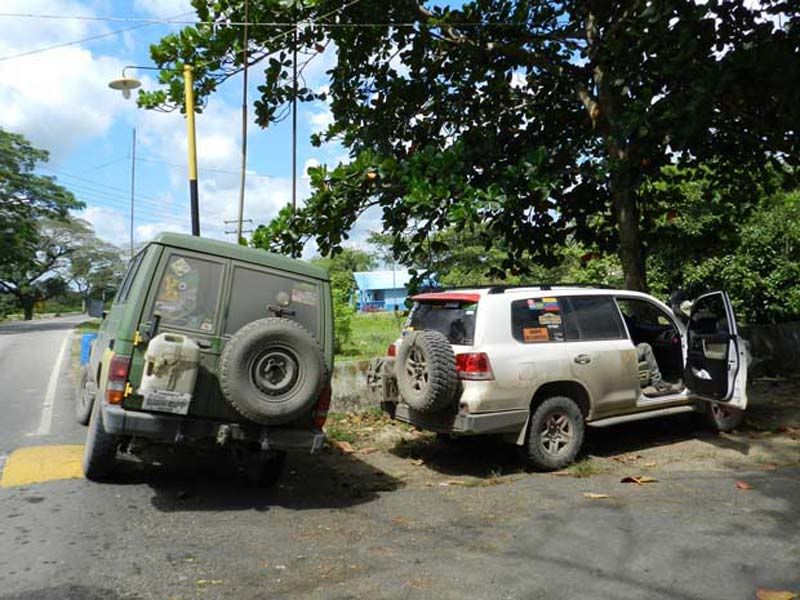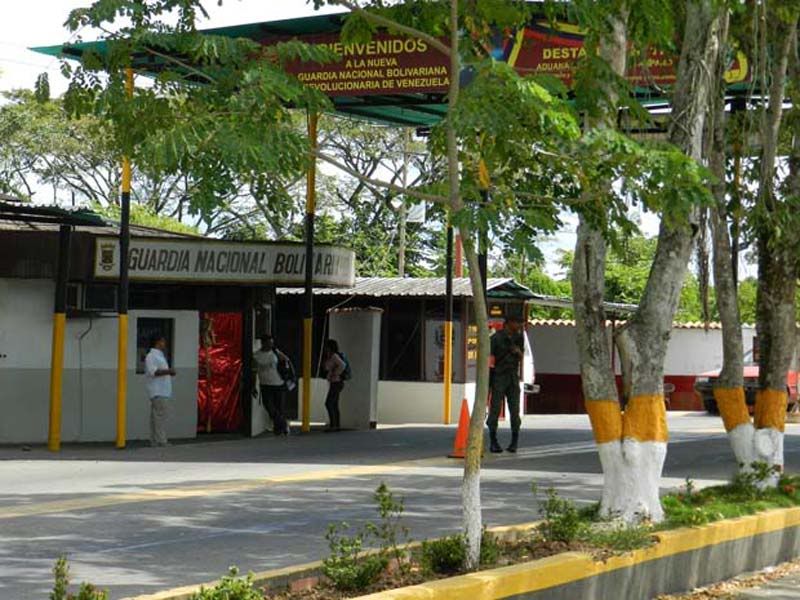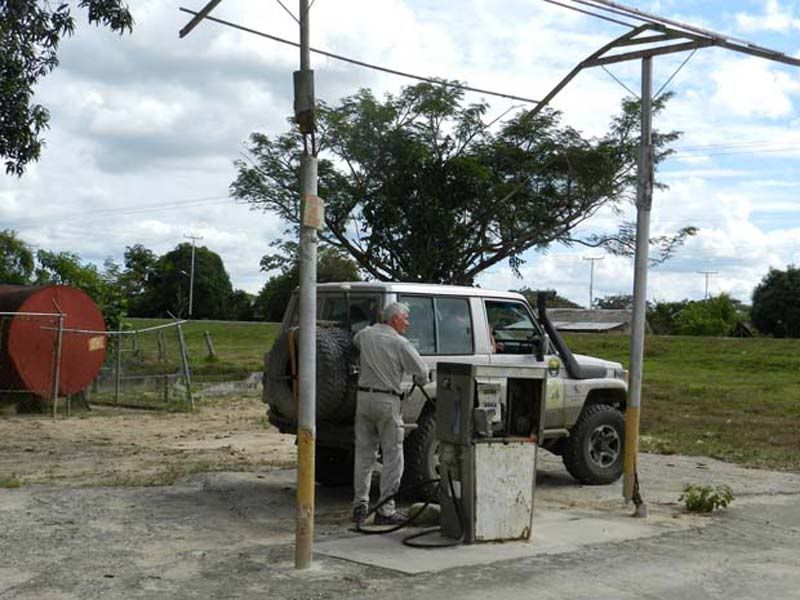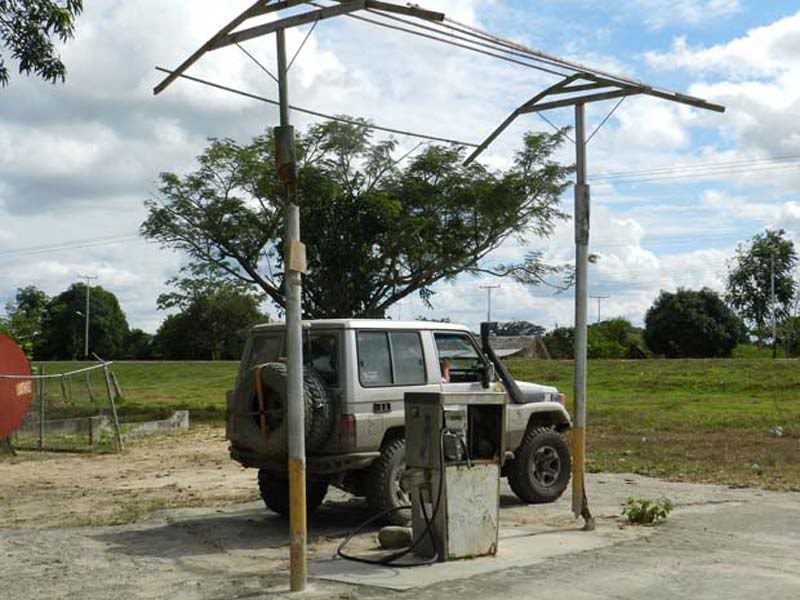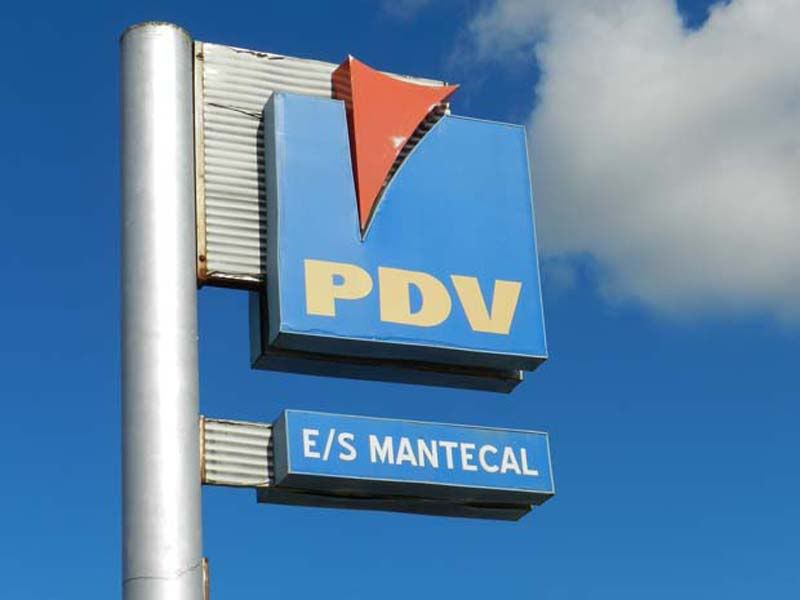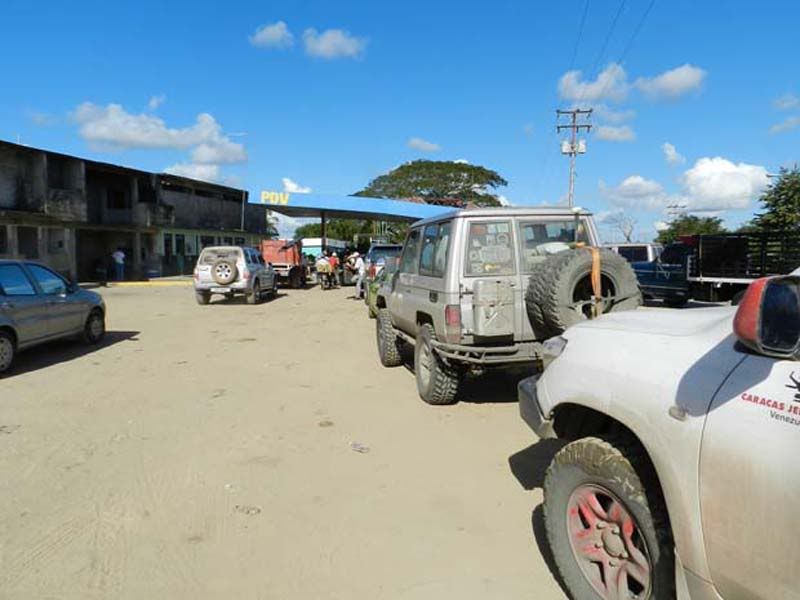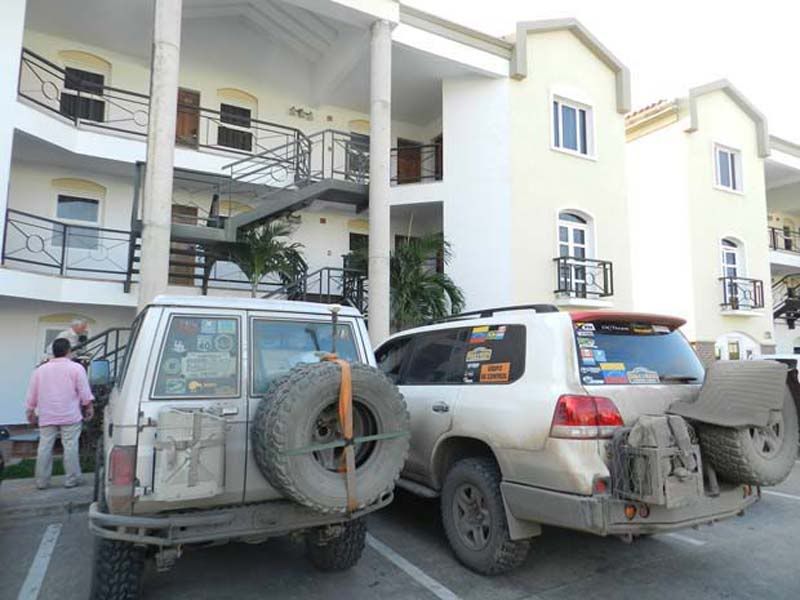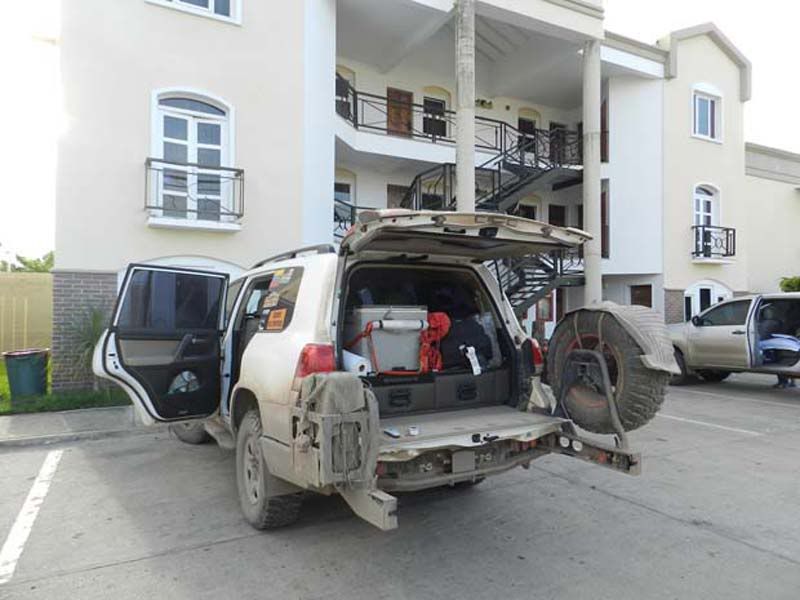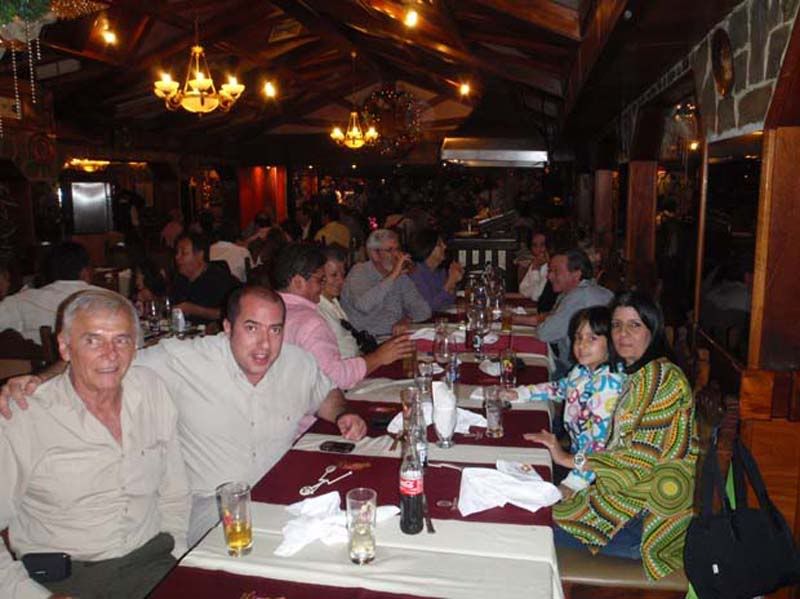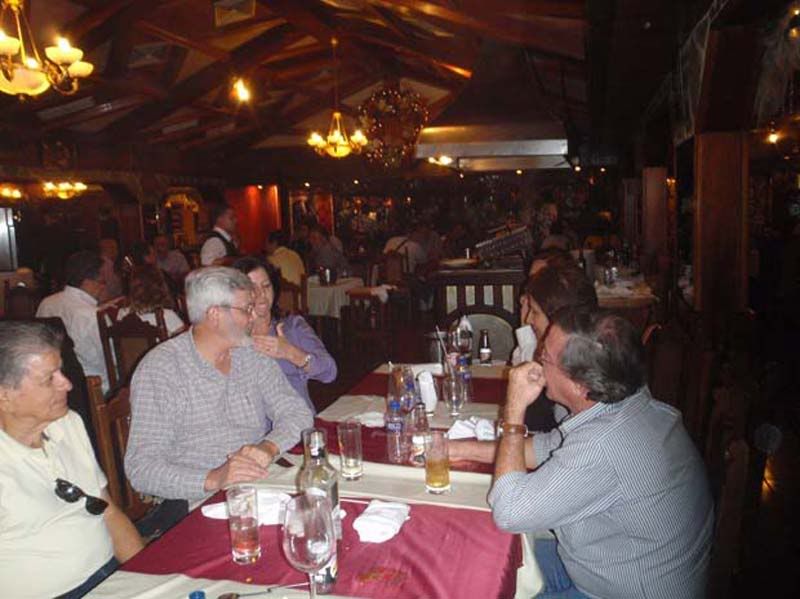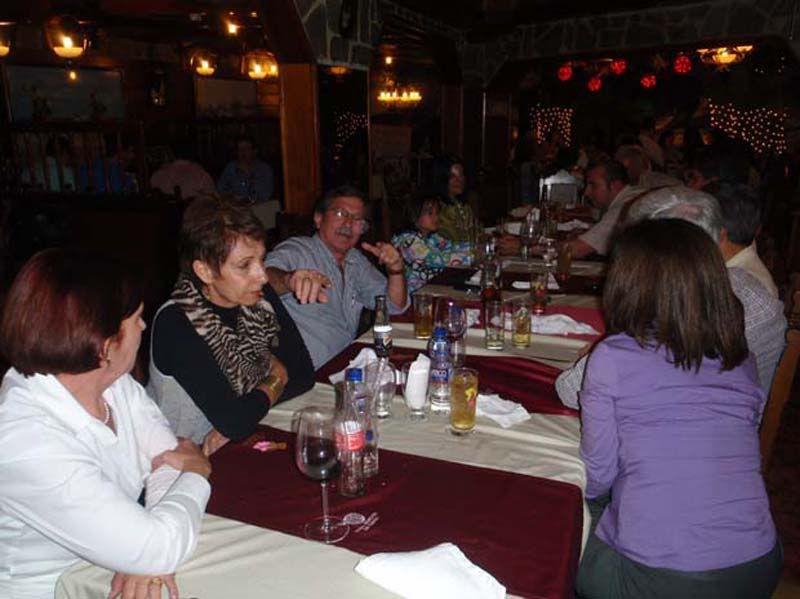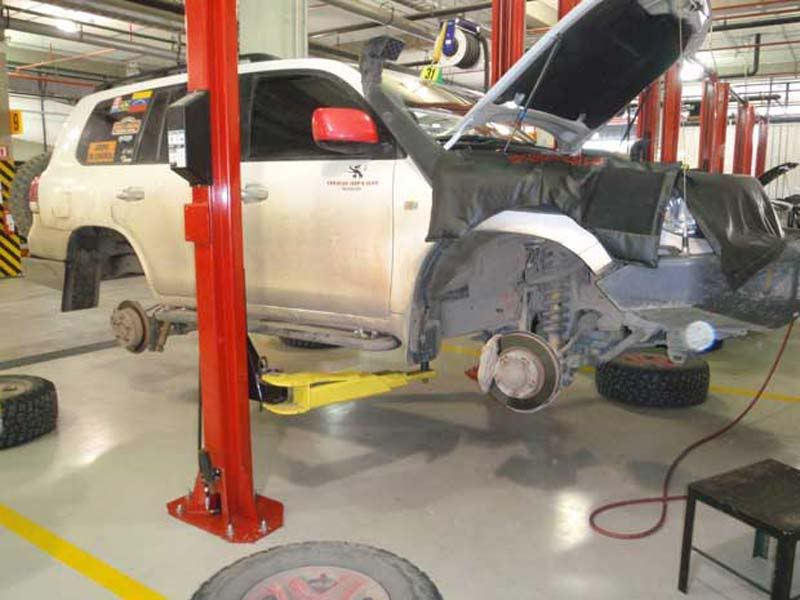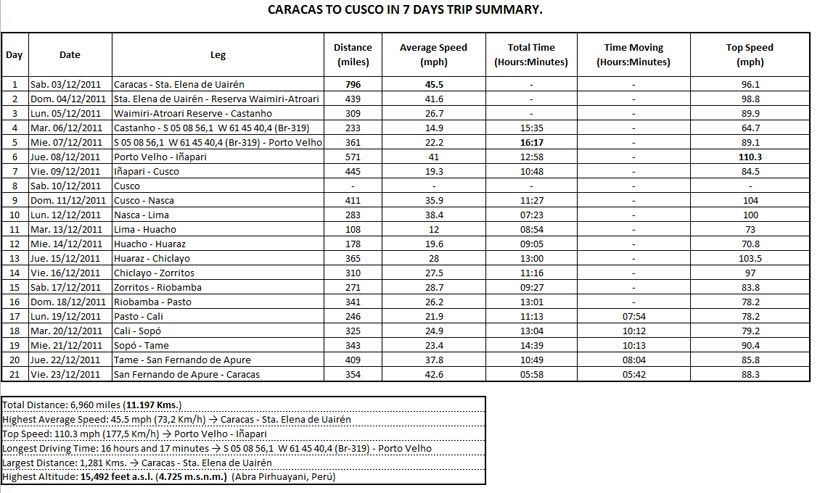Thursday December 22, 2,011
From Tame to San Fernando de Apure
Distance: 409 miles (658 Km.)
Total Time: 10 hours and 49 minutes
Time moving: 08 hours and 4 minutes
Average Speed: 37.8 mph (60,8 Km/h)
Top Speed: 85.8 mph (138,1 Km/h)
The Tame Real Hotel.
Streets of Tame.
A well equipped International Red Cross ambulance. Details of the front bumper and winch, a subject of much controversy now in Venezuela, can be seen in these photos.
The ambulance had 235/85R16 tires on it.
Tame proved to be a friendly, clean town with attractive shops and a large well cared for main square. The group was pleasantly impressed by this place with good lodging, nice people and decent food.
Refueling in Colombia, very close to the border with Venezuela. Surely they got Venezuelan gas, which had to be payed at international prices. Needles to say, this gasoline most certainly was “exported” with the consent of the National Guard, as we shall see later on.
Immigration proceedings on the Colombian side of the border.
The paperwork to get the cars out of Colombia was delayed because the person in charge of signing the documents wasn’t in his office. When traveling in the third world, its best to make up one’s mind to the idea that this sort of things happen all the time, and just take it easy, as a normal part of these trips.
Finally, the clerk went back to work, and it was possible to move to Venezuela, in order to start with the paperwork there.
The Bolivarian Corruption Complex at the border. The immigration office, where passports are stamped for entering Venezuela, is located behind the red gift paper wrapped door.
Once on the Venezuelan side, things got interesting. The immigration office door was closed, while the employee was attending a group of Colombians who could barely fit inside.
Our trip members had to wait outside, as they were instructed to do. There they had to wait for quite a long time, which allowed them to watch closely to a significant number of trucks that, while crossing the border from Venezuela to Colombia, opened their drivers’ doors not too discreetly, to hand out bribe money to the National Guard soldier at the checkpoint. This went on several times while they were there. They guessed that the trucks were transporting either gasoline or Venezuelan government subsidized food to the neighboring country.
Finally, a few seconds too soon, the immigration office door opened, allowing some of our friends to see the thick wad of bills on the employee’s desk, before he hastily threw them into one of its drawers. Together with the group of Colombians that then left the office, there was a young woman carrying about 15 or 20 Venezuelan passports in her hands, which were easily recognizable by their familiar burgundy color.
For the record, this happened on Thursday, December 22, 2,011 at around 11:30am, at the Venezuelan border checkpoint in El Amparo, Apure State.
Fooling around a little, he is supposed to be trying to refuel at this state of the art gas station. Could this be a glimpse of our future? Sadly, it may very well be.
In their search for fuel, the GPS took them to this very socialist and revolutionary pump, as clearly seen by its condition.
Already in Venezuela, and after having driven the BR-319 in the Amazon and through the jungle region of Madre de Dios in Peru, throughout Ecuador, from south to north, and the Colombian llanos (plains), they found a surprising feature that sharply distinguishes Venezuela from all those places. This country is bursting with wildlife. Since they left El Amparo, along the road, they were able to watch animals in a variety and quantities like in no other segment of this trip. Birds of many kinds, in much larger quantities than those seen in two days in the Brazilian Amazon. Foxes, chiguires (capibara, Hydrochoerus hydrochaeris), babas (caiman, caiman crocodilus) and many others, were easily seen along the way as they headed north.
Based on what they saw in this trip, there seems to be nothing like Venezuela’s varied and abundant “native” fauna.
Because of the disastrous situation with the gasoline supply anywhere near the Venezuelan borders, our travelers went as far as Mantecal 140 miles (225 Km.) away to fill up their vehicles, but not without having to endure a long and disorderly queue, particularly because of the god given right of bikers to fill up before anyone else. They behave like certain old ladies at supermarkets, who always seem to have the right to go first.
Talking about motorcycles. Driving in these five countries allowed our travelers to witness how motorcycles, especially cheap Chinese models, have a huge economic and social impact on the small poor communities of our continent, by becoming a work tool and means of transport attainable by most. Bikes are used as taxis, family cars, cargo transports for almost every kind of goods, and some of these are not precisely light. Small bikes are used to herd animals in grazing chores, with trailers to increase their cargo capacity, with roofs for passenger transport. The small bike seems to have become an important source of income and to have contributed to improve the quality of life and services in these communities, bringing them a little bit closer to progress.
You may find more photos of this day by clicking
here.
